Recent Articles
Popular Makes
Body Types
2018 Acura NSX vs. 2018 Nissan GT-R: Which Is Best?

2018 Nissan GTR front three quarter parked ・ Photo by Nissan
When Baby Boomers think of supercars, they conjure visions of sleek Italian models like the Ferrari F430 and Lamborghini Gallardo, British speedsters like the McLaren P1 and Aston Martin DBS, or the Chevrolet Corvette and Dodge Viper from the USA. Ask a Gen-Exer or Millennial to name their favorite supercars, though, and the answer is likely different: Japan’s Acura NSX and Nissan GT-R.
Raised on a steady diet of video games, young enthusiasts learned about the exclusive high-end cars from the Far East and clamored for the latest editions of the vehicles as they were previewed in virtual form in Forza Motorsport, Need for Speed, Gran Turismo, and other racing games. The real-life versions of NSX and GT-R both debuted in new editions for the 2017 model year, and continue in production for 2018. Which is the best?
Exterior Design
While beauty is undeniably in the eye of the beholder, the Acura NSX is easily our winner in this category. Impossibly low and sleek, the NSX looks like it was carved by the wind. Fitted with Acura’s signature Jewel-Eye LED headlight array and a sneering grille flanked by big air intakes, the NSX’s expressive face promises performance. Wide flanks with floating C-pillars and rear engine vents emphasize the muscularity of the vehicle’s haunches. The NSX takes your breath away with its planes, curves, angles, and contrasts.
The GT-R, in contrast, is all aggression. Its blunt front end and short overhang appear to suck up the road ahead, and unadorned sides pay little attention to style. The roofline is sleek and slopes steeply from front to rear, ending in a spoiler and a pert trunk. Both the NSX and the GT-R are striking designs, but are sharply contrasting — a ballroom dancer meets an MMA fighter.
Acura NSX
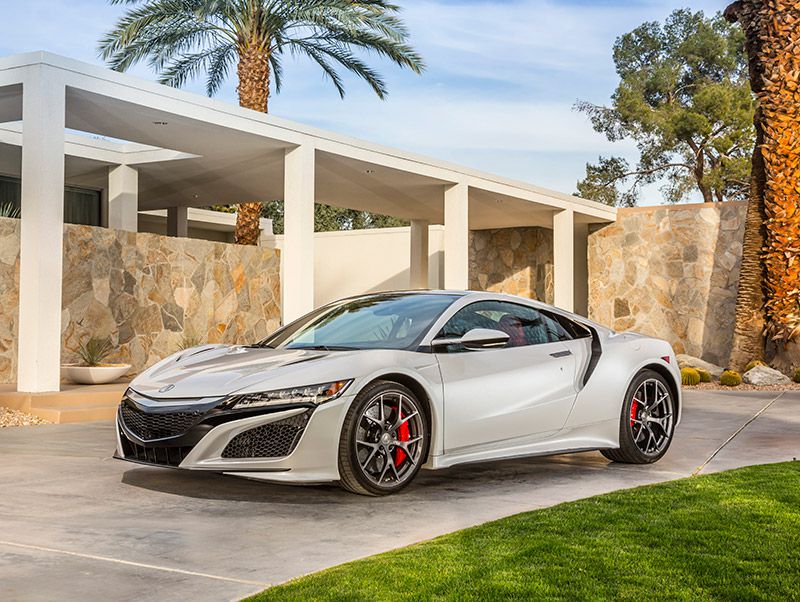
Photo by Acura
Interior Design
The NSX is a two-passenger supercar, while the GT-R is a 2+2 grand touring coupe. The NSX’s cockpit layout is driver-centric, with controls and gauges arrayed for the operator’s convenience and access. The elegant center stack is built to appear structural, with strong pillars supporting the rest of the dash, which branches out from it. High-quality materials and finishes abound.
The GT-R is similarly designed for the driver, but Nissan opted for a more monochromatic color scheme. The center stack is busier than the NSX’s, and it feels more brutal and purpose-built. A programmable multi-function display provides instantaneous feedback on performance and setup, a cool feature that begs for endless fiddling. The GT-R’s second row of seating, in typical grand touring fashion, is sized for short rides.
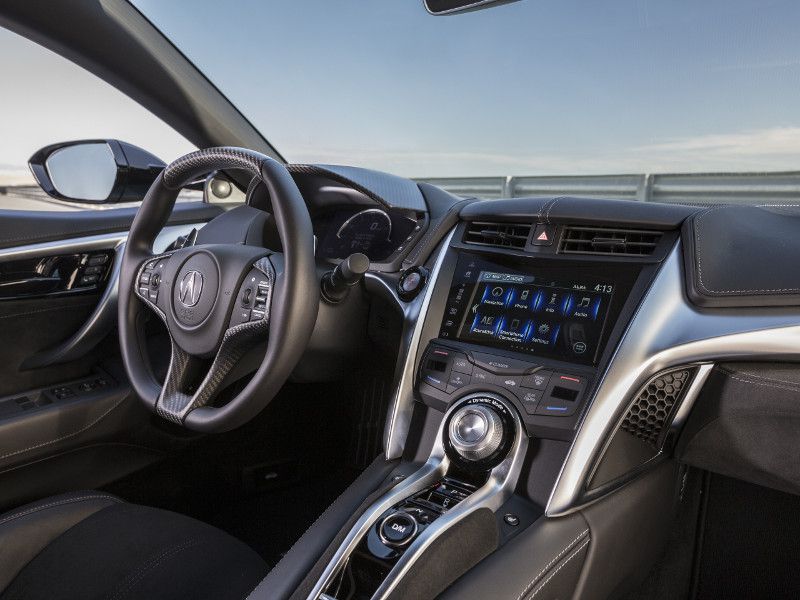
Photo by Acura
Engine/Motors
Both the GT-R and NSX come with twin-turbocharged V6 engines. The GT-R’s is a hand-assembled 3.8-liter unit that’s tuned to produce 565 horsepower and 467 lb-ft of torque, and it is LEV2/ULEV emission vehicle-rated. The NSX has a 3.5-liter V6 that puts out 500 hp and 406 lb-ft of torque to the rear wheels, supplemented by two electric motors that power the front wheels, resulting in total system power ratings of 573 hp and 476 lb-ft of torque.
The GT-R is rated to achieve 16 mpg city/22 mpg highway/18 mpg combined, while the NSX can achieve 21 mpg city/22 mpg highway/21 mpg combined according to the EPA, with a CARB emission rating of ULEV 125. Acura states the top speed of NSX as 191 mph; Nissan doesn’t list a top speed for the GT-R, but most estimates put it at 195 mph. The GT-R is probably marginally faster from 0 to 60 mph at an estimated 2.9 seconds.
Tie

Photo by Nissan
Transmission/Drive System
Both the GT-R and NSX have all-wheel drive, but with very different technologies. GT-R has a six-speed dual-clutch automatic transmission (DCT) and uses an independent rear transaxle to transfer power to all four wheels. The driver can select gears sequentially using steering wheel-mounted paddle shifters or allow the automatic mode to control gear selection. In normal driving, only the rear wheels are driven, but when conditions demand, up to 50 percent of the power can be directed to the front wheels.
The NSX has a nine-speed DCT with column-mounted paddle shifters, and the gasoline engine drives the rear wheels. The front wheels are powered, when needed, by two permanent-magnet oil-cooled electric motor/generators.
Tie
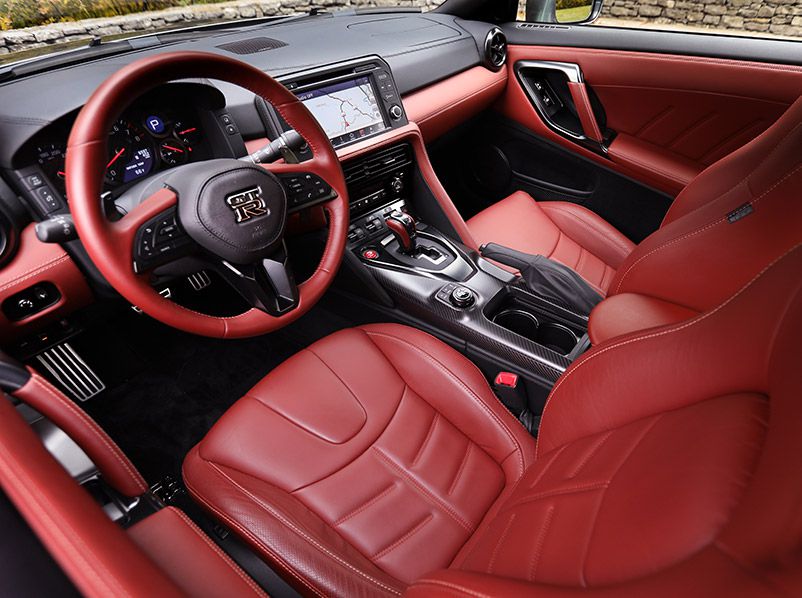
Photo by Nissan
Construction/Materials
Engineers work hard to find the right combination of materials to achieve desired chassis and body strength, rigidity, and a low weight. The GT-R’s body is composed of a hybrid of steel, die-cast aluminum, and carbon fiber. Great effort has been expended to optimize weight distribution, and the GT-R is built on an exclusive Premium Midship platform that is not shared by any other vehicle.
The NSX is similarly unique among Acura and Honda vehicles, built on a platform that was specifically designed for the supercar. Its chassis is multi-material, with extensive use of aluminum. A space frame made primarily of aluminum is skinned with aluminum and solid material composite panels with cast aluminum suspension mounting points. An optional carbon fiber roof can be ordered to further reduce the vehicle weight and increase rigidity.
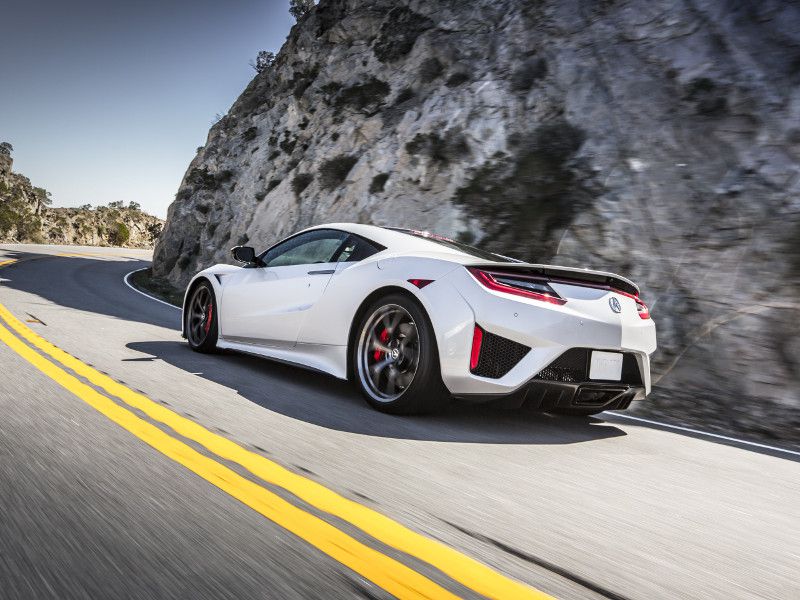
Photo by Acura
Braking, Suspension, and Handling
A fast car is useless if it can’t also turn and stop. The GT-R’s four-wheel independent suspension (double-wishbone front/multi-link rear) is backed up with an adjustable Bilstein DampTronic shock system, 15.35-inch front/15.0-inch rear Brembo disc brakes, and six-piston front/four-piston rear calipers. 20-inch aluminum alloy-forged wheels are fitted with Dunlop Sport Maxx GT run flats, filled with nitrogen.
The NSX also has a double-wishbone front/multi-link rear four-wheel independent suspension setup with adjustable dampers, these of the magnetorheological type — filled with a fluid impregnated with magnetic particles that change the viscosity in response to electrical impulses. Brembo brakes and calipers handle the slowing and stopping, with 14.5-inch front/14.2-inch rear discs and six-piston front/four-piston rear calipers. The NSX’s wheels are staggered, with 19-inch fronts and 20-inch rears.
Tie
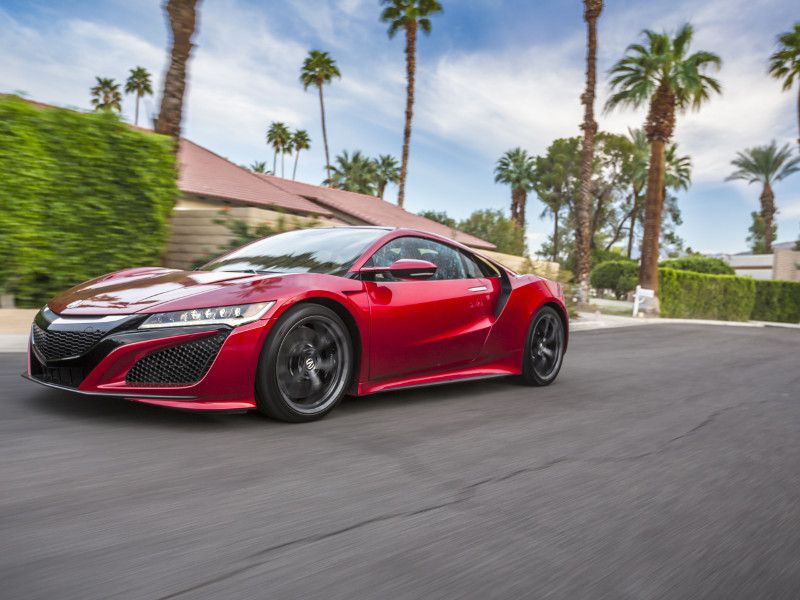
Photo by Acura
Racing
Both NSX and GT-R have built real-life racing pedigrees — not just video game stats. Both run in GT classes and have accumulated cabinets full of trophies. Both Nissan and Acura offer track versions of their halo vehicles, race-ready editions that have been stripped of non-essential equipment and trimmings to reduce weight and complexity and to increase performance potential.
The 2018 GT-R Track Edition lists at $128,490, while the NSX GT3 starts at $546,000. The GT-R Track Edition is street-legal in the U.S., while the NSX GT3 is a race-only configuration designed for specialty service.
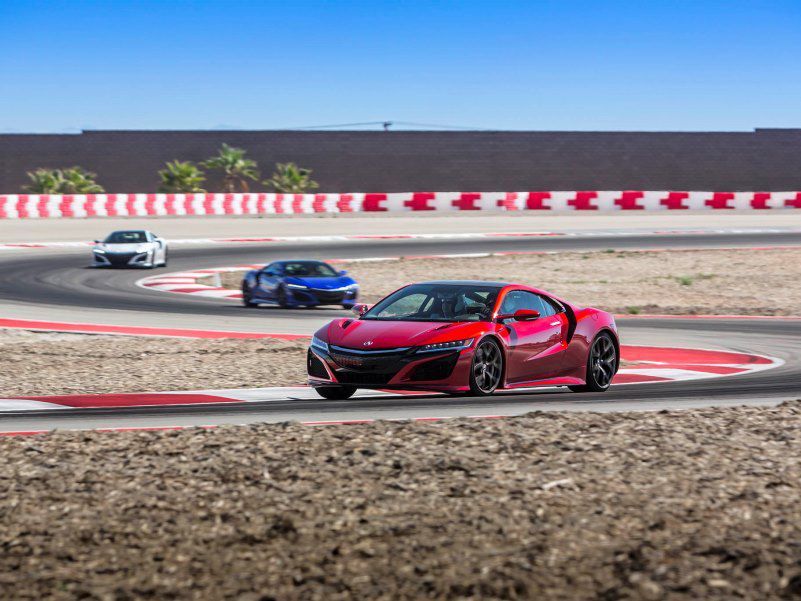
Photo by Acura
Collectability
The rarer a desirable car is, the more collectable it is. On this basis, the NSX has proven to be a very good investment for lucky buyers. First-generation NSX vehicles (sold from 1990-2005) were produced and sold in very limited quantities, and original vehicles in good condition can command six-figure prices. The re-launch of the NSX as a 2017 model after a decade's gap increased interest in the original.
GT-R production, while not massive, has been broader than the NSX's, and vehicles tend to have been driven hard, so prices are a bit lower. A gently driven, adult-owned GT-R is a rare bird and might be a good investment. Time will tell whether the new NSX outperforms the GT-R in the collector market, but we’d bet that the trend continues.
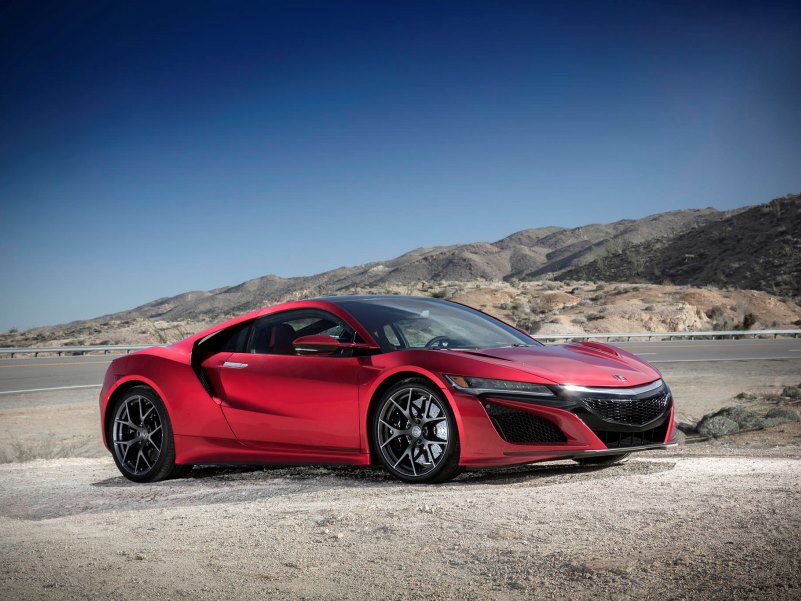
Photo by Acura
Pricing
The 2018 Nissan GT-R comes in four trim levels: Pure (starting at $99,990); Premium (starting at $110,490); Track Edition (starting at $128,490); and Nismo (starting at $175,490). Special paint can add up to $3,000, and there are three Premium Interior Packages ($4,280) to upgrade interior materials and accessories.
The NSX comes in just one street-legal trim level, starting at $157,800. Carbon fiber interior and exterior packages — $2,900 and $9,000, respectively — are available, along with a carbon fiber engine cover ($3,600), carbon fiber roof ($6,000), and carbon fiber rear decklid spoiler ($3,000). Carbon-ceramic brake rotors run from $9,900 to $10,600, depending on the caliper finish. You can upgrade to a Technology Package for $2,800 to $3,300, and premium paint jobs run from $700 to $6,000.
Nissan GT-R

Photo by Nissan
Overall
To choose a winner, we have to look beyond the NSX and GT-R and consider the competition among sub-$200,000 supercars. The new Lexus LC demands attention, and any discussion of affordable supercars must include the Porsche 911, Audi R8, and Mercedes-Benz AMG GT, not to mention the Maserati GranTurismo Sport and Jaguar F-Type.
To confine the discussion to the NSX and GT-R, though, is almost like comparing a circular saw to a reciprocating saw. Both might pack the same power, and both might be capable of cutting wood, but each approaches the task so differently that they’re hard to compare. The GT-R is a very impressive, powerful Japanese interpretation of the muscle car, while the NSX is a delicately honed Japanese version of the supercar. Ultimately, the superior technology, refinement, and collectability of NSX edge out the brute force of the GT-R.
Acura NSX
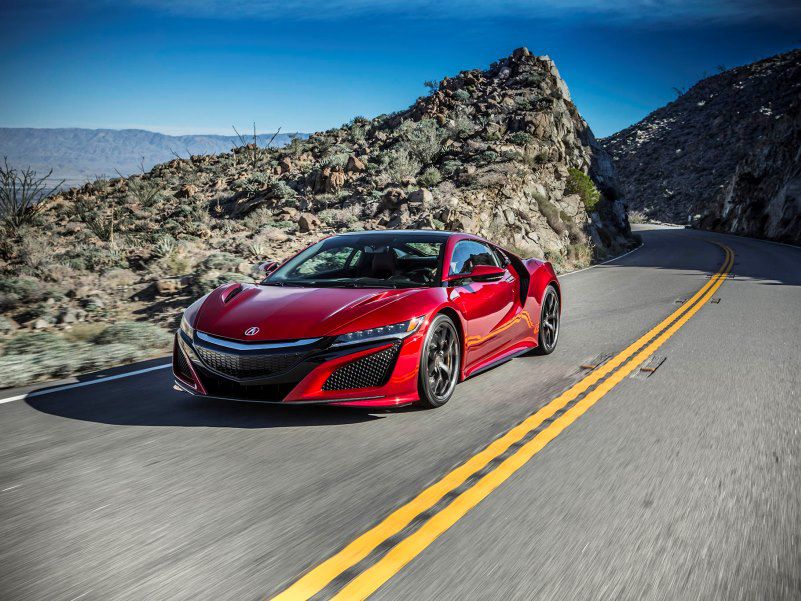
Photo by Acura